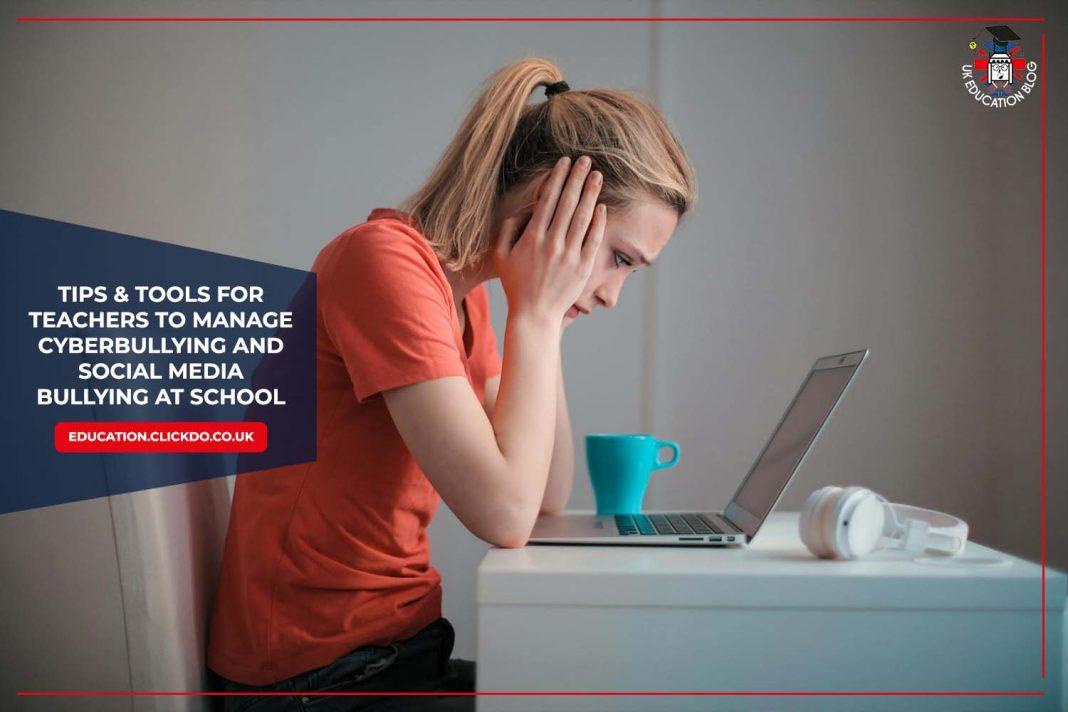10% of all children between the ages of 10 and 15 reported having received hurtful messages about them in addition to being called names, sworn at, or insulted. These were the two most prevalent forms of online bullying behaviour.
Using information from the Crime Survey for England and Wales (CSEW), estimates of the frequency and type of cyberbullying among children aged 10 to 15 were made.
Bullying isn’t defined by law, but it’s commonly understood to be behaviour that causes physical or psychological harm to another person. It can occur online, at home, or at school.
In England and Wales, approximately one in five children aged 10 to 15 (19%) encountered at least one form of online bullying behaviour in the year ending March 2020, amounting to 764,000 children.
Of the children who reported experiencing online bullying, over half (52%) said they would not characterise these actions as bullying, and one in four (26%) chose not to tell anyone about their experiences.
This article explores the multifaceted nature of cyberbullying, the role of educators in prevention and intervention, and the contributions of experts in shaping effective strategies to combat this pervasive issue. By understanding the complexities of cyberbullying and implementing proactive measures, we can work towards creating a safer and more inclusive online environment for all.
Understanding Cyberbullying

Cyberbullying involves the use of digital platforms to harass, threaten, or humiliate individuals. Unlike traditional bullying, cyberbullying can occur at any time, making it more invasive and challenging to manage. Recognising the signs of cyberbullying in educational organisations is the first step in addressing the issue. These signs may include changes in student behaviour, such as withdrawal from social interactions, changes in academic performance, and emotional distress.
It’s crucial to discern what qualifies as bullying, especially amidst innocent teasing on social media and via text messages. Cyberbullying entails instances where a young individual is subjected to online embarrassment, humiliation, harassment, threats, or torment, whether through social media platforms, texts, or other digital means. When teasing transforms into repeated mistreatment or harassment by a minor towards another, it crosses the line into bullying. Trusting your instincts and investigating any suspected cyberbullying is essential. Such behaviours, along with aggression in schools, foster a culture of violence and can detrimentally affect education.
The Role of Educators
UNICEF highlights various online platforms that offer tools for children and young people to combat bullying. These tools include options to restrict who can view or interact with their posts, as well as features to report instances of bullying. Additionally, social media companies provide educational resources for children, parents, and teachers to understand online risks and promote safety.
Moreover, individuals are encouraged to take an active role in addressing cyberbullying within their communities. This may involve speaking out against bullies, seeking support from trusted adults, or simply spreading awareness about the issue. Even small acts of kindness can make a significant difference.
Educators play a pivotal role in preventing and addressing cyberbullying. They are often the first line of defence and can take proactive steps to create a safe online space for students. This includes cybersecurity education, promoting positive online behaviour, and establishing clear policies and procedures for reporting and addressing incidents.
7 Tips for Prevention and Intervention Measures for Teachers

1. Internet Safety Program
Implement a comprehensive internet safety education program for all the kids within your class or school. This initiative should encompass awareness of the risks posed by hackers and online anonymity, along with strategies to prevent and address cyberbullying.
Additionally, it should emphasise responsible online conduct aligned with ethical communication standards. Cybersecurity education holds immense importance, especially in safeguarding children from online threats.
By imparting knowledge about cybersecurity and online safety, children can effectively protect themselves in the digital realm. Such education fosters the development of essential skills required to navigate online spaces securely and responsibly.
2. VPN Installation
Encourage the installation of VPNs on digital devices used by students at home as well as in schools. VPNs encrypt all data transmitted and received, rendering the user anonymous online and minimising the risk of cyberbullying incidents. This encryption helps to protect the user’s personal information and online identity, reducing the risk of cyberbullying incidents.
Additionally, VPNs can provide anonymity by masking the user’s IP address, making it harder for cyberbullies to identify and target them. Overall, the use of a VPN can create a safer and more secure online environment, helping to mitigate the risks associated with cyberbullying.
3. Promote Open Communication
Foster trust with students to create an environment where they feel comfortable confiding in you about distressing experiences, including instances of cyberbullying. Assure both victims and potential bullies that you will address reported incidents of cyberbullying logically and rationally.
Discover further guidance on communicating sensitive topics with students which could be part of the bullying here:
How Substance Abuse Can Affect Student’s Academic Performance
Possible Mental Health Effects after A-Levels Exams Termination
4. Additional Parental Support
Establishing a secure learning environment necessitates collaboration. Schools can engage parents in their children’s education and work together with the community to bolster safety protocols. Through parent-teacher meetings, workshops, and events, schools encourage active parental involvement in their children’s educational journey.
By involving parents in safety initiatives and providing updates on school policies and activities, schools ensure that they are well-informed partners in fostering a safe learning environment.
Check this guide out for more tips:
Ways Modern Technology Improves Parent Teacher Relationships
5. Reporting Cyberbullying
Educate the students about the exact process of reporting once they face any instances of cyberbullying inside or outside the school. The first and foremost step should be to inform the concerned school authorities. The next steps are then decided based on the individual circumstances and the gravity of the incident.
Children should be equipped with the knowledge of how to report cyber threats and online harassment to trusted adults or law enforcement authorities. Cybersecurity education can be integrated into diverse learning environments such as schools, after-school programs, and online home learning. Teachers and parents can utilise age-appropriate materials, videos, games, and interactive activities to educate children about cybersecurity.
6. Policies And Legislation
Engage with educational authorities and governmental bodies to advocate for robust policies and legislation addressing cyberbullying in schools. Seek guidance tailored to specific situations to enhance online safety measures.
For further legal guidance, one can refer to Prevent Duty’s statutory guidance on online safety and radicalization from the UK Home Office, or the Department for Education’s (DfE) “Keeping Children Safe in Education” (2020) statutory guidance for schools and colleges. All UK schools must adhere to this guidance, and they should also inform parents about implementing relevant measures at home.
7. Clear Device Use Guidelines
The objective is to establish clear rules for electronic device usage to prevent online harassment. To achieve this, teachers in schools will update Acceptable Use Policies to include provisions on cyberbullying and prominently display guidelines in areas where technology is utilised.
Template platforms such as Twinkl offer examples of clear device use guidelines tailored for educational settings, facilitating the creation of comprehensive policies. By integrating provisions on cyberbullying into Acceptable Use Policies and prominently displaying guidelines, educators can effectively communicate expectations and deter online harassment, promoting responsible digital citizenship among students.
Expert Tips & Views on Cyberbullying

Let’s take a look at what industry experts have suggested teachers and educators to protect students from cyberbullying:
- Dr Carrie-Anne Myers, a criminologist at the City University of London, has over 25 years of experience researching bullying and its impact. She co-authored a report for Ofcom on cyberbullying among children in the UK, which was supported by the Anti-Bullying Alliance and The Diana Award.
Dr Carrie-Anne Myers recommended that teachers and educators need to recognize that cyberbullying is often interconnected with face-to-face bullying.
She stressed the importance of understanding that online and offline bullying are frequently linked, often through shared physical spaces like school.
“I’ve researched bullying and its impact for over 25 years. What’s important about this project is that it demonstrates there is no clear-cut difference between an online and offline world. Central to participants’ accounts was a view that cyberbullying often did not happen in isolation from face-to-face bullying. Rather, online and offline bullying were frequently interlinked, often through in-person connections in shared places such as schools. The ‘online world’ is everyone’s daily reality and we need to continue to explore children and young people’s experience and understanding of harmful behaviours to protect and safeguard them.”
- Dr Tanya Byron, a clinical psychologist specialising in child and adolescent mental health, has provided insights into the effects of technology and the internet on young people, including issues related to cyberbullying. To ensure alignment with the new curriculum, Dr. Tanya Byron urges the government to incorporate best practices into case studies and curriculum guidelines. She advocates for a comprehensive approach to e-safety in schools. She stresses that e-safety knowledge and skills are essential for new teachers to have, and she proposes changes to the required ICT test as well as recommendations for training providers.
Byron emphasises the significance of elevating e-safety to a national priority for educators’ ongoing professional development. In addition, she suggests implementing Acceptable Use Policies and that all schools and neighbourhood children’s services use accredited filtering services as part of a whole-school initiative to mainstream e-safety into teaching, learning, and practices.
- Professor Peter Smith, Emeritus Professor at Goldsmiths, University of London, is a renowned expert in the field of bullying and cyberbullying. He has authored numerous articles and books on the subject and has been involved in various international projects to combat bullying. Several recommendations have been proposed by Professor Peter Smith, including the issuance of guidance or workbooks by the Department for Education and Skills (DfES) to aid schools in crafting effective anti-bullying policies, alongside offering feedback services.
4 Resources for Teachers to gain knowledge about Cyberbullying:
- Crossing the Line: PSHE Toolkit (Childnet): A comprehensive resource by Childnet, endorsed by the PSHE Association, offering films and lesson plans to address online safety issues among 11-14-year-olds.
- Anti-Bullying Alliance: A coalition of organisations striving to stop bullying and create safer environments for children and young people to thrive.
- Enable (pan-European anti-bullying programme): A pan-European anti-bullying program focused on developing social and emotional learning skills to enhance resilience in young people, both online and offline.
- SWGfL Digital Literacy: Free schemes of learning by SWGfL are designed to empower pupils across all year groups with critical thinking skills, digital safety behaviours, and responsible digital citizenship.
Conclusion
In today’s digital age, the prevalence of cyberbullying poses a significant challenge to educators, parents, and policymakers alike. Unlike traditional forms of bullying, cyberbullying leverages digital platforms to harass, threaten, or humiliate individuals, transcending the boundaries of time and place. Recognizing the signs of cyberbullying and implementing effective prevention and intervention strategies are paramount in creating a safe and supportive environment for young people.
Educators play a crucial role in addressing cyberbullying and social media bullying, serving as the frontline defence in promoting positive online behaviour and providing support to students. By fostering open communication, implementing clear policies, and incorporating social and emotional learning into the curriculum, schools can empower students with the skills to navigate the digital landscape responsibly.
Author Profile

- Editor in Chief
- Blogger and Educator by Passion | Senior Online Media & PR Strategist at ClickDo Ltd. | Contributor to many Education, Business & Lifestyle Blogs in the United Kingdom & Germany | Summer Course Student at the London School of Journalism and Course Instructor at the SeekaHost University.
Latest entries
 ed techMay 11, 2025Best 5 STEM Subjects Apps for Teenagers
ed techMay 11, 2025Best 5 STEM Subjects Apps for Teenagers careerApril 15, 2025Top 6 Student Side Hustles To Earn While You Learn
careerApril 15, 2025Top 6 Student Side Hustles To Earn While You Learn careerMarch 11, 2025The Smart Student’s Guide to Picking a Degree That Actually Pays Off
careerMarch 11, 2025The Smart Student’s Guide to Picking a Degree That Actually Pays Off ed techFebruary 19, 2025How AI Voice Generators Are Transforming the E-Learning Industry
ed techFebruary 19, 2025How AI Voice Generators Are Transforming the E-Learning Industry







